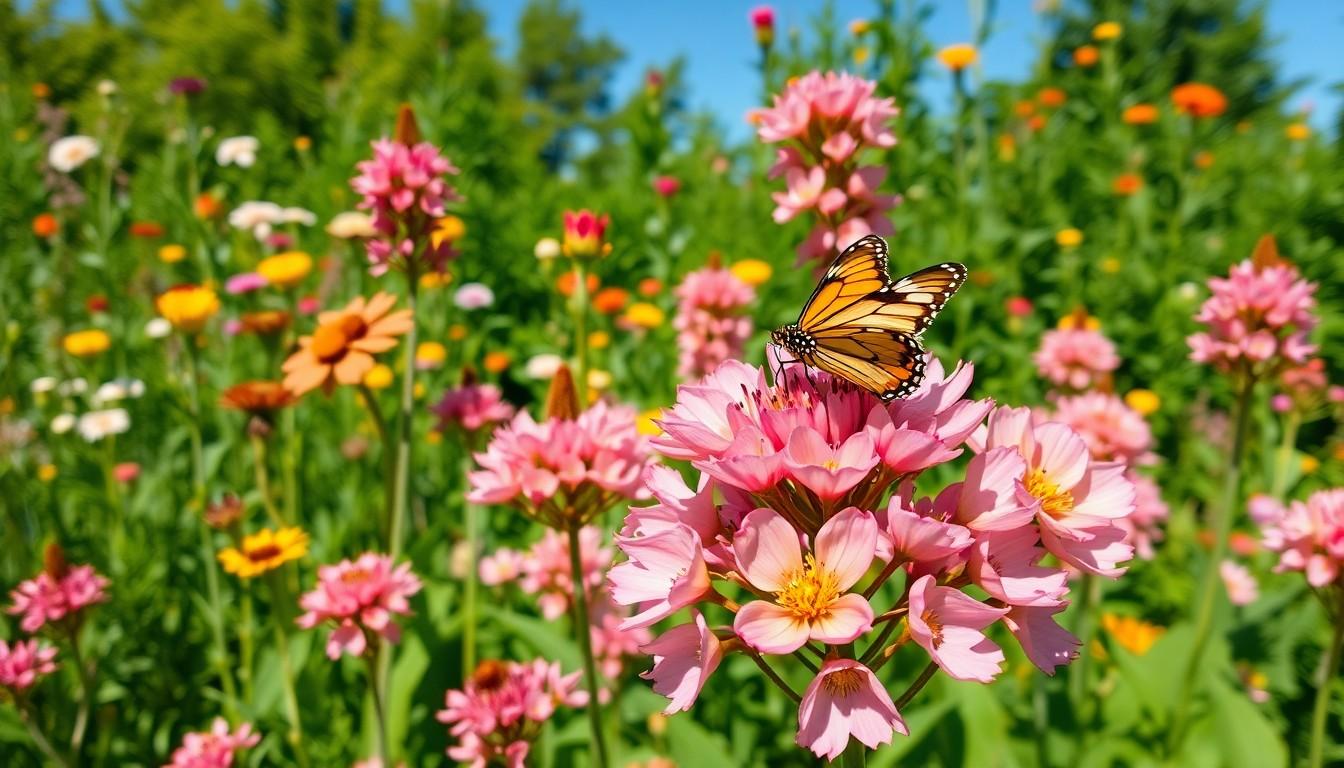When it comes to attracting those enchanting hingagyi butterflies, choosing the right milkweed is like picking the perfect dance partner—some just know how to make the magic happen. With so many varieties out there, it might feel like a game of botanical roulette. But fear not! This guide will help you discover the milkweed that’ll have those butterflies fluttering around like they just found the VIP section of a garden party.
Overview of Hingagyi
Hingagyi butterflies, known for their vibrant colors and delicate wings, rely heavily on specific milkweed species for survival. Milkweed serves as a crucial habitat and food source for their larvae. Selecting appropriate milkweed varieties directly impacts the population of hingagyi butterflies in a given area.
Different species of milkweed attract different butterfly types. Common milkweed (Asclepias Syriaca) stands out as an excellent choice due to its robust growth. This species offers ample nectar and is favored by many pollinators, including hingagyi butterflies. In contrast, swamp milkweed (Asclepias incarnata) provides a moisture-rich environment, perfect for these butterflies.
Native milkweed plants play a vital role in preserving hingagyi butterflies. Planting local varieties promotes biodiversity and creates a sustainable ecosystem. Monarch milkweed (Asclepias tuberosa) also garners attention as a butterfly favorite, with its vibrant orange flowers attracting numerous pollinators.
Furthermore, understanding the specific needs of hingagyi can enhance butterfly attraction. Factors to consider include sunlight exposure, soil types, and water availability. These elements influence the growth of milkweed plants and, subsequently, butterfly presence. Monitoring environmental conditions helps ensure a thriving habitat for hingagyi.
By prioritizing the right milkweed varieties, individuals can create inviting spaces for hingagyi butterflies. A well-planned garden fosters a connection between plants and butterflies, contributing positively to the local ecosystem. Each selection plays a part in a broader narrative of conservation and appreciation for these beautiful insects.
Importance of Milkweed for Hingagyi

Selecting appropriate milkweed species significantly impacts hingagyi butterflies. These species provide essential support for their survival and contribute to local ecosystems.
Nutritional Benefits
Milkweed serves as the primary food source for hingagyi larvae. As caterpillars feed on milkweed leaves, they obtain vital nutrients that promote healthy growth. Certain milkweed varieties, such as common milkweed and swamp milkweed, offer higher concentrations of essential compounds, boosting caterpillar development. The nectar from milkweed flowers attracts adult butterflies, enhancing their energy levels during foraging. This dual benefit fosters a thriving population of hingagyi butterflies.
Habitat Requirements
Milkweed plays a crucial role in creating suitable habitats for hingagyi butterflies. Different milkweed species cater to varying environmental needs. Common milkweed thrives in well-drained soil and sunny areas, while swamp milkweed flourishes in moist locations. Understanding the specific habitat requirements ensures proper establishment and growth of milkweed, thereby promoting butterfly presence. By cultivating diverse milkweed varieties, individuals can create habitats that support hingagyi butterflies throughout their lifecycle.
Types of Milkweed Suitable for Hingagyi
Selecting the right milkweed species enhances the appeal for hingagyi butterflies, acting as both nourishment and habitat. Different types cater to specific growing conditions and butterfly needs.
Common Varieties
Common milkweed (Asclepias Syriaca) serves as a prevalent choice for attracting hingagyi butterflies. Known for its sturdy structure, this species offers ample nectar throughout the blooming season. Swamp milkweed (Asclepias incarnata) thrives in wet areas, presenting stunning pink flowers that draw adult butterflies. Butterfly milkweed (Asclepias tuberosa) is another option, characterized by its vibrant orange blossoms and drought resistance, making it an excellent addition to sunny gardens. Each of these varieties plays a role in fostering a supportive environment for hingagyi populations.
Regional Adaptations
Certain milkweed varieties excel in specific geographic regions. For example, desert milkweed (Asclepias erosa) adapts well to arid climates, while aquatic milkweed (Asclepias perennis) flourishes in wetter habitats. Understanding local conditions influences successful planting and butterfly attraction. Species like showy milkweed (Asclepias speciosa) thrive in prairie areas, offering diverse nectar sources for hingagyi butterflies. Each choice connects to environmental factors, promoting a sustainable habitat that supports these essential pollinators.
Cultivation Tips
Selecting the right milkweed requires specific considerations. Soil conditions and climate play major roles in nurturing hingagyi butterflies.
Soil and Climate Considerations
Understanding soil types is important for milkweed survival. Common milkweed prefers well-drained soils, while swamp milkweed thrives in moisture-rich environments. Both species flourish in full sun, but tolerance to varying conditions may differ. Regions with heavy clay or sandy soils might require amendments to support growth. Incorporating organic matter boosts soil fertility, enhancing nutrient availability. Local climate influences temperature and seasonal rainfall, impacting plant development. Proper selection of milkweed species according to site-specific conditions optimizes habitat for hingagyi butterflies.
Pest and Disease Management
Managing pests and diseases is crucial for healthy milkweed plants. Aphids pose a common threat, often infesting milkweed leaves. Hand-picking or using insecticidal soap can effectively control them. Additionally, fungal pathogens can cause leaf spots, impacting plant vitality. Ensuring good air circulation through adequate spacing between plants reduces the risk of diseases. Healthy plants naturally withstand pest pressures, so regular observation and maintenance are essential. Incorporating companion plants may also attract beneficial insects to the garden, aiding pest management strategies. Prioritizing these practices helps maintain a thriving habitat for hingagyi butterflies.
Conclusion
Choosing the right milkweed for hingagyi butterflies is essential for fostering their presence and supporting their lifecycle. By selecting species that cater to their specific needs and local environments, individuals can create thriving habitats that attract these beautiful pollinators.
Whether opting for common milkweed, swamp milkweed, or other suitable varieties, every choice contributes to the overall health of the ecosystem. With proper care and attention to soil and climate conditions, milkweed can flourish, providing the nourishment and shelter hingagyi butterflies require.
Ultimately, nurturing these plants not only enhances the beauty of gardens but also plays a vital role in conservation efforts, ensuring that hingagyi butterflies continue to grace our landscapes for generations to come.





